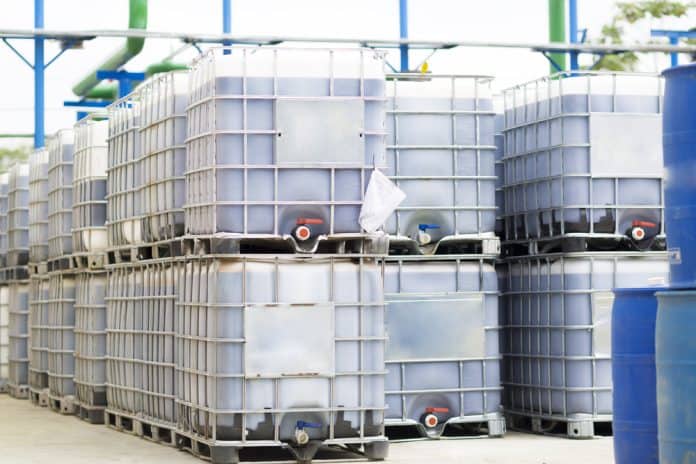How are liquids being transported to international markets? Rather than using drums, ISO tanks or intermediate bulk containers (IBC) a Flexitank can minimize loading and unloading times and maximize the loading volume within a 20 foot container and reduce losses from spillages.
What is a Flexitank?
Flexitanks are a creative solution to shipping liquid items in bulk. Flexible tanks were introduced in the 1960s as a rubber-like material bag. The original bag’s loading capacity was around 10,000 gallons. The bags were used to transport products such as formaldehyde, fruit juices, and even used as storage for fuel in Antarctica.
The technology has improved since then and rubber tanks were replaced with a more cost-effective material made of layers of polyethylene. The most common type of flexibags can now store up to 24,000 liters, which is about 6,500 gallons. Once the price of the bladders dropped, Flexitanks became a popular shipping method amongst chemical companies. The bladder is much lighter in weight compared to loading metal drums inside the containers, thus maximizing revenue-generating payloads.
What type of cargo can be shipped in a Flexitank?
The Flexitanks are airtight, portable, flexible bags or bladders. So, they are a great solution to ship nearly all types of non-hazardous liquids. Here are a few examples of industrial and food commodities, but by no means every substance that’s shipped using Flexitanks:
- Base Oils
- Beer and Wine
- Fruit Juices
- Food Additives
- Lube Oils
- Mineral Oils
- Vegetable Oils
- Pharmaceuticals and specialty chemicals
What are the benefits to using a Flexitank? What’s the competitive advantages to support the use among likely customers?
- Maximizing loading volume. One Flexitank can hold the liquid amount equating to about 30,000 bottles of wine vs 10,000 physical bottles that fit inside a 20 foot shipping container.
- Less Labor. No heavy lifting or forklifts required. Flexitanks reduce loading and unloading times by 90%. The flexible bags or bladders are supplied and fitted within 30 minutes!
- Once the flexitank bag is positioned in the container, a hose and pump are all that is needed to load and unload the liquid quickly and efficiently.
- Contamination and taint risks are minimal. Each Flexitank is non-reusable, so every bag is new and sterile for shipment.
- Cutting transportation costs. No cleaning or disposal costs. The bags can be recycled and only the 20 foot container needs to be returned. One way transportation reduces the shipping cost as the Flexitank does not return to the place of origin.
What to consider when shipping items in bulk:
- The chemistry of the product being transported. Hazardous or non-hazardous, will the cargo manage better in a stainless-steel ISO tank or Flexitank made of thermoplastic?
- Temperature controls. Both ISO and Flexitanks have temperature-controlled options during transit. Depending on the properties of the liquid, a heating element may be required. Especially during the winter months to help prevent coagulation that could make it difficult for unloading.
- Equipment availability within the loading region. Labor involved for the loading/unloading. Cleaning of a reusable ISO Tank vs the recyclability of Flexitank.
At MTS Logistics, we understand the importance of safely loading and delivering high value liquids in a cost-efficient manner. Please contact your local MTS Logistics supply chain expert for more information about bulk liquid transportation. We can help analyze which packaging methods are most economical for your company’s financial savings. Shipping via Flexitank may prove to be a more cost-effective and efficient way of shipping your liquid cargo.




